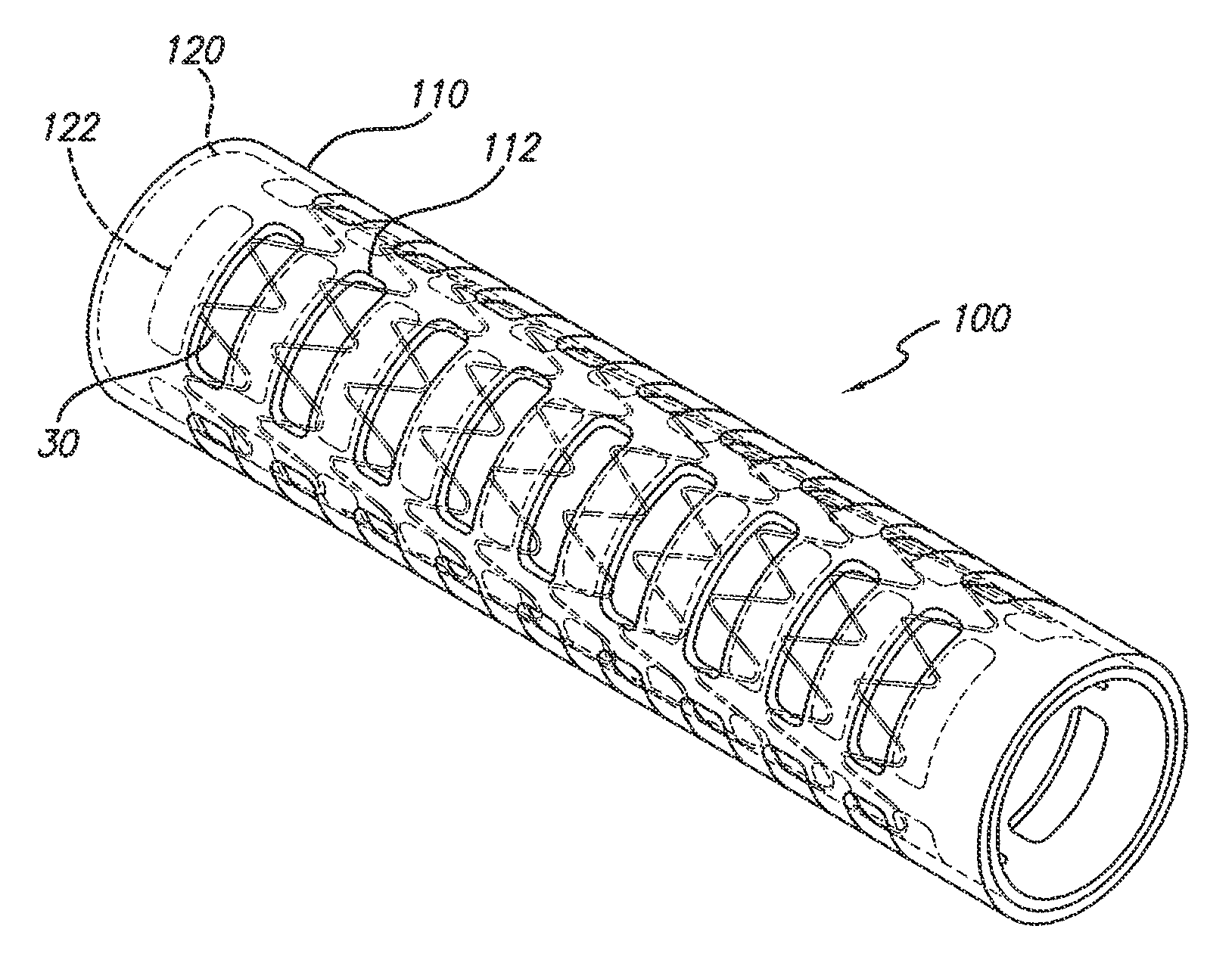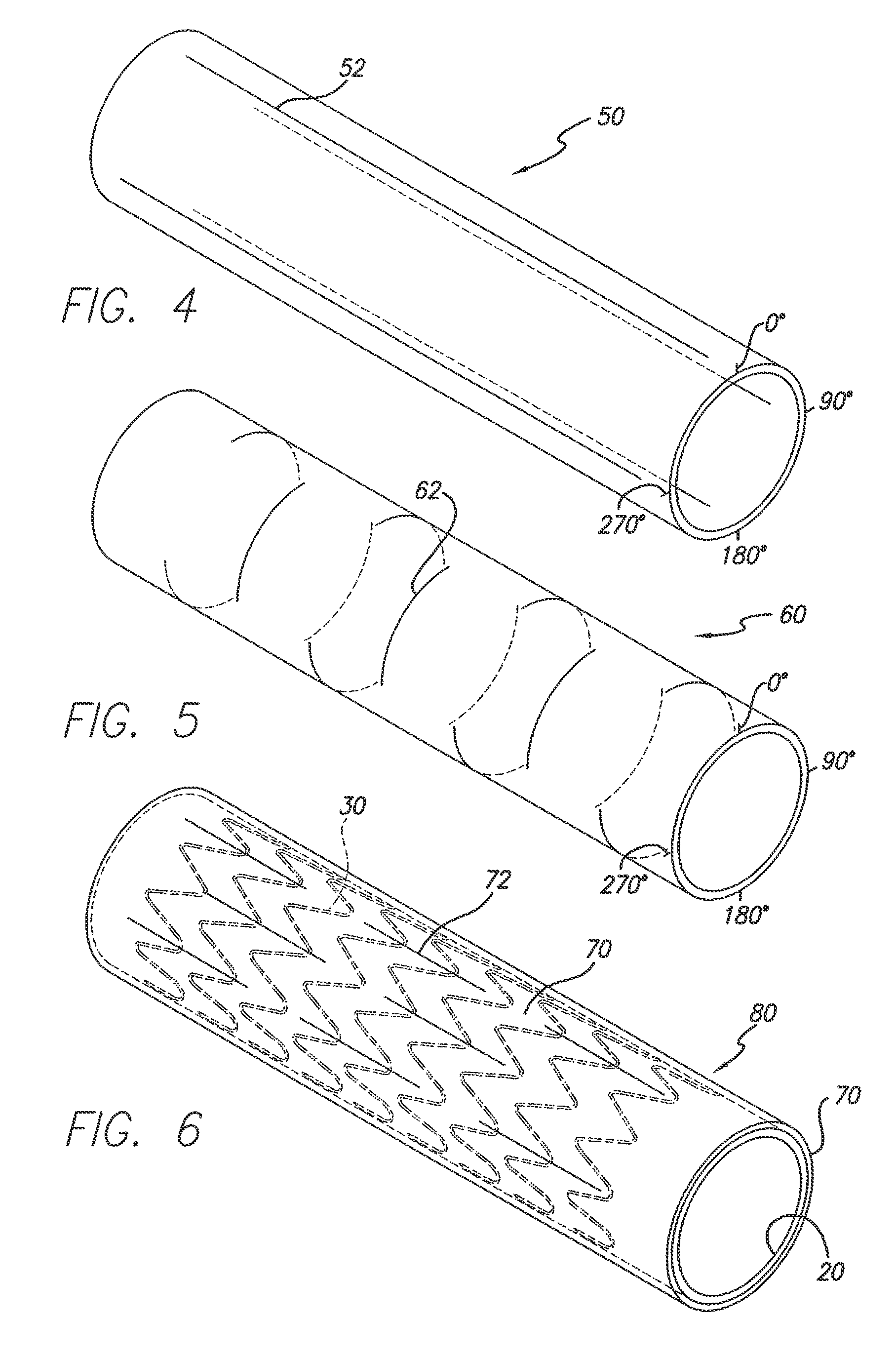Partial encapsulation of stents
a stent and encapsulation technology, applied in the field of medical devices, can solve the problems of restenosis of the vessel, high labor intensity of suturing, and in particular, and achieve the effects of preventing cellular infiltration, improving flexibility, and maintaining its shap
- Summary
- Abstract
- Description
- Claims
- Application Information
AI Technical Summary
Benefits of technology
Problems solved by technology
Method used
Image
Examples
Embodiment Construction
[0019]The present invention satisfies the need for an encapsulated stent device to prevent restenosis that is flexible upon expansion and contraction so that the general structural form is retained. This is accomplished encapsulating a stent or a plurality of stent rings using an ePTFE covering into which openings have been cut.
[0020]Referring now to the drawings, in which like reference numbers represent similar or identical structures throughout, FIG. 1 illustrates an initial step in constructing the partially encapsulated stent of the present invention. A tubular ePTFE graft 20 is placed over a mandrel for the assembly of a device 10 (FIG. 3). A stent is then placed over the graft 20. In a preferred embodiment, as shown in FIG. 1, a series of zigzag sinusoidal ring stents 30 are placed over the outer surface of the graft 20. Alternatively, one or more stents wherein each stent comprises more than one ring or hoop (e.g., where the rings are helically connected) can be used. The ri...
PUM
| Property | Measurement | Unit |
|---|---|---|
| length | aaaaa | aaaaa |
| biocompatible | aaaaa | aaaaa |
| length | aaaaa | aaaaa |
Abstract
Description
Claims
Application Information
 Login to View More
Login to View More - R&D
- Intellectual Property
- Life Sciences
- Materials
- Tech Scout
- Unparalleled Data Quality
- Higher Quality Content
- 60% Fewer Hallucinations
Browse by: Latest US Patents, China's latest patents, Technical Efficacy Thesaurus, Application Domain, Technology Topic, Popular Technical Reports.
© 2025 PatSnap. All rights reserved.Legal|Privacy policy|Modern Slavery Act Transparency Statement|Sitemap|About US| Contact US: help@patsnap.com



